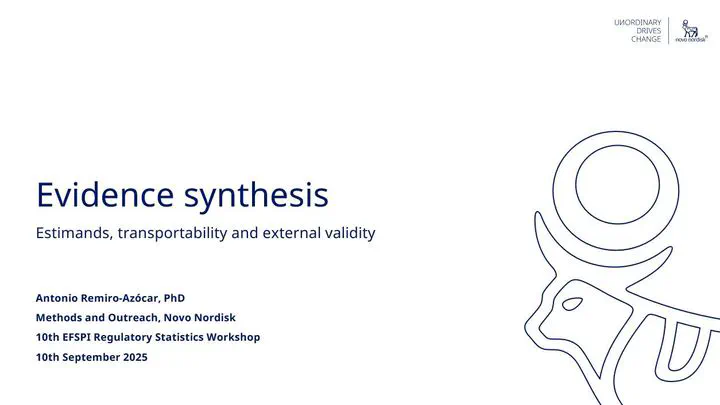From Trials to Target Populations - Extending Evidence for Decision-Making

I had the privilege of participating in the 10th EFSPI Regulatory Statistics Workshop in Basel, where I gave a talk on estimands for evidence synthesis. My presentation was part of a session “From Trials to Target Populations – Extending Evidence for Decision-Making”. Seamus Kent (Erasmus University Rotterdam) set the stage very nicely and Miguel Hernán (Harvard University) gave a fantastic presentation guiding us through target trial emulation using observational data. The presentations were followed by an exciting panel discussion and Q&A together with Anja Schiel (Norwegian Medicinal Products Agency).
My presentation stressed that estimands are just as crucial for synthesizing multiple trials as they are for individual trials. In particular, summary measures and intercurrent event strategies – not components of frameworks such as PICO – are key components of the research question and important sources of heterogeneity in meta-analyses. Insofar, the uptake of estimands in evidence synthesis has been modest. I highlighted the value of estimands to explicitly address heterogeneity between trials and to maximize the applicability of pooled estimates for healthcare decision-making. Estimands can ensure that evidence syntheses are maximally relevant to decision-makers, while strengthening communication between stakeholders about what evidence syntheses seek to demonstrate.
My slides on summary measures and intercurrent event strategies are based on my papers linked here and here, respectively. The latter paper proposes a pragmatic framework for the application of estimands to meta-analyses of clinical trials, applying estimands to an aggregate-level data network meta-analysis comparing the efficacy of semaglutide versus dulaglutide in type 2 diabetes.